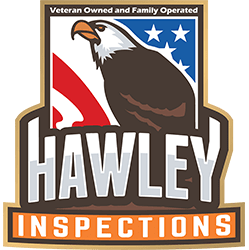
Sump Pump Back Up Systems – May 15, 2017
Sump pumps are divided into two basic groups; pedestal and submersible. A pedestal sump pump will be about 30 inches tall and stick out of the sump hole with the motor on top. A submersible pump is designed to operate at or below the surface of the water in the sump hole. Pedestal pumps normally use a rod and float. Submersibles will use either a float or a pressure switch to activate the motor.
Sump pumps are the forgotten guardians of basements and crawl spaces until they fail. The two most common failures are mechanical and electrical. Switches are easily replaced on pedestal and some submersible styles. A failed motor on the other hand usually requires replacement of the complete unit.
Further more the number one defense for water intrusion into basements and crawl spaces is proper grading of the ground away from the home. Number two would be clean gutters with downspouts directed 4 to 6 feet away from the foundation
Basic rules for sump pumps
Here are some basic rules for proper sump pump installation and operation:
- Pumps should set 1 to 2 inches above the bottom of the pit to keep dirt and debris out of the pump impeller. Pumps used as lift stations for washing machines should have protective screens to protect the impeller
- A cover to prevent someone from accidentally stepping in the sump hole is absolutely necessary
- Sump pumps must have Ground Fault Circuit Interruption (GFCI) protection. This is a recent addition to the National Electrical Code and many as explained below there are numerous protective devises to prevent accidental failures
- In most areas plumbing codes forbids sump pumps from discharging into the municipal sewer system. The reason for this is all water that transfers to the sewer system is must be treated
- Discharge lines should be checked periodically to insure they are free of leaks and are not blocked
- Finally if you have a finished basement or have a high water table you may want to install a backup pump or alarm system
Sump Pump Back Up Systems
There are two basic backup systems readily available. The most common is the battery backup pump. Battery backup systems typically use a 12 volt battery and charger that will operate a 12 volt pump if the main pump fails.
The disadvantage to this is, it will only last until the battery is drained. You may only have as little as two days of protection with the battery backup.
The municipal water supply pump will continue to operate independent of local power failures. The disadvantage here is you may have a whopping big water bill if the main pump were to fail while you were in Florida for two weeks.
Finally a second and much easier solution is to install a backup
alarm. Again two options are available. First you may install a high water alarm that warns you when the water level in the sump hole is reaching a dangerously high level.
Second you can in stall a failed circuit alarm that alerts you if the receptacle serving the sum p pump has lost power.
Both are available at your local hardware store for $30 to $40 and can be installed in less than 15 minutes.
In conclusion your best insurance against a flooded basement is proper drainage and a backup system.
For more information on our warranties
Warranty
Check us out at the Better Business Bureau




